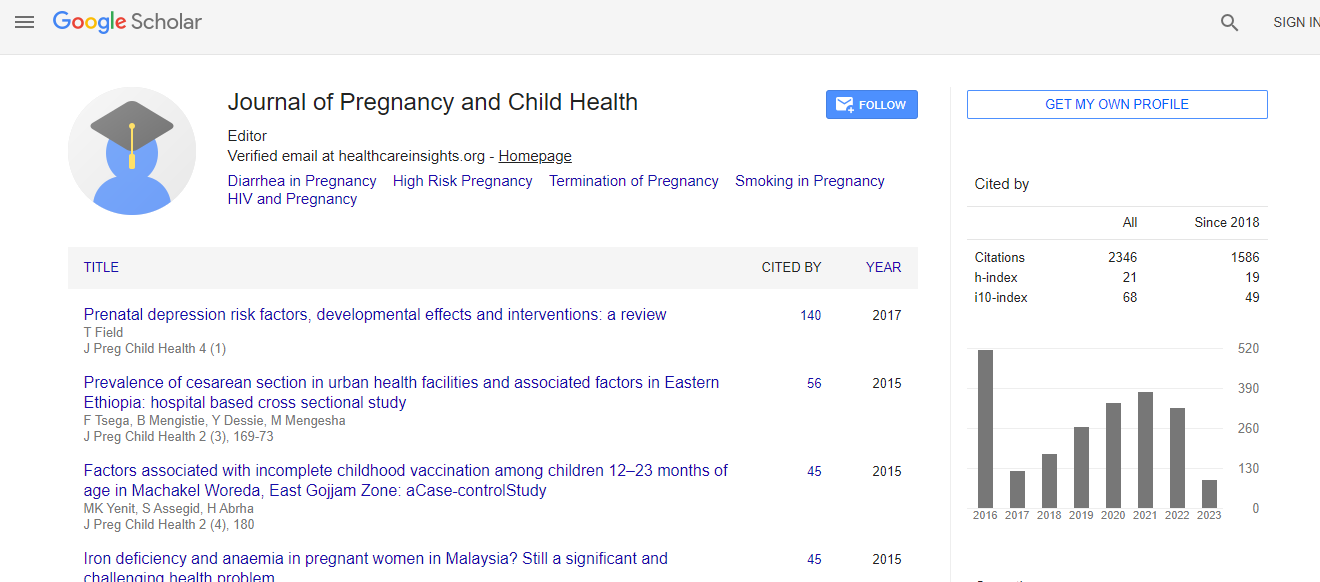Research Article
Delayed Cord Clamping in the Premature Neonate: Development of an Interdisciplinary Guideline
Karen M Frank1, Dawn Mueller-Burke2,3, Janine Bullard4, Jan Wilson2,5 and JoAnne Silbert-Flagg1*1Johns Hopkins University, School of Nursing, Baltimore, USA
2University of Maryland, School of Nursing, Baltimore, Maryland, USA
3University of Maryland Medical Center, Baltimore, USA
4Johns Hopkins University, School of Medicine, Department of Pediatrics, Baltimore, USA
5Mercy Medical Center, Baltimore, USA
- *Corresponding Author:
- JoAnne Silbert-Flagg
Johns Hopkins University
School of Nursing, University in Baltimore
Maryland, USA
Tel: +1 410-955-4766
E-mail: jsilber1@jhu.edu
Received Date:November 10,2015; Accepted Date: November 15,2015; Published Date: November 22, 2015
Citation: Frank KM, Mueller-Burke D, Bullard J, Wilson J, Silbert-Flagg J, et al. (2015) Delayed Cord Clamping in the Premature Neonate: Development of an Interdisciplinary Guideline. J Preg Child Health 3:261. doi:10.4172/2376-127X.1000261
Copyright: © 2015 Frank KM, et al. This is an open-access article distributed under the terms of the Creative Commons Attribution License, which permits unrestricted use, distribution, and reproduction in any medium, provided the original author and source are credited.
Abstract
Evidence supporting delayed cord clamping (DCC) in the premature newborn is increasing, yet in a level IV neonatal intensive care unit (NICU); DCC was not being consistently performed, and when it was there were noted variations in the absence of a standardized guideline. The objective of this quality improvement (QI) project was to develop and secure institutional approval of a DCC guideline for the premature newborn and increase knowledge of DCC among healthcare providers (HCPs). The design was a QI project using Rogers’ Diffusion of Innovations (DOI) Theory to guide the development of a DCC guideline. Educational in-services were conducted to increase knowledge of DCC and the components of the DCC guideline. A panel of nine experts including interdisciplinary HCPs from the NICU and the obstetrics department (OB) defined and approved the DCC guideline content. A convenience sample of 90 HCPs participated in the DCC educational inservices. The use of the DCC Guideline Development tool created from best evidence guided an interdisciplinary committee towards consensus and final approval of the DCC guideline. Eleven standardized DCC in-services were conducted with pretest-posttest knowledge surveys. Essential components of the guideline include a delay of 45 seconds before cord clamping, inclusion and exclusion criteria, thermoregulation interventions, and responsibilities of the NICU and OB team. In-service education of DCC and guideline was effective based on survey results. The DCC guideline and education of the HCPs seeks to translate best evidence into practice and standardize DCC implementation. Future plans include measuring retained knowledge, guideline adherence by the HCPs, and evaluation of clinical outcomes.

 Spanish
Spanish  Chinese
Chinese  Russian
Russian  German
German  French
French  Japanese
Japanese  Portuguese
Portuguese  Hindi
Hindi 
